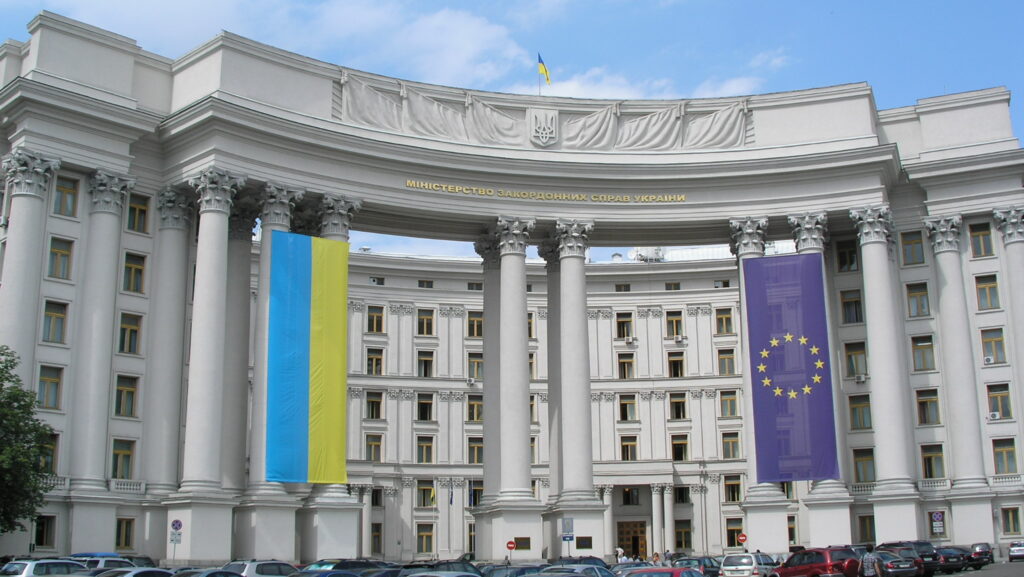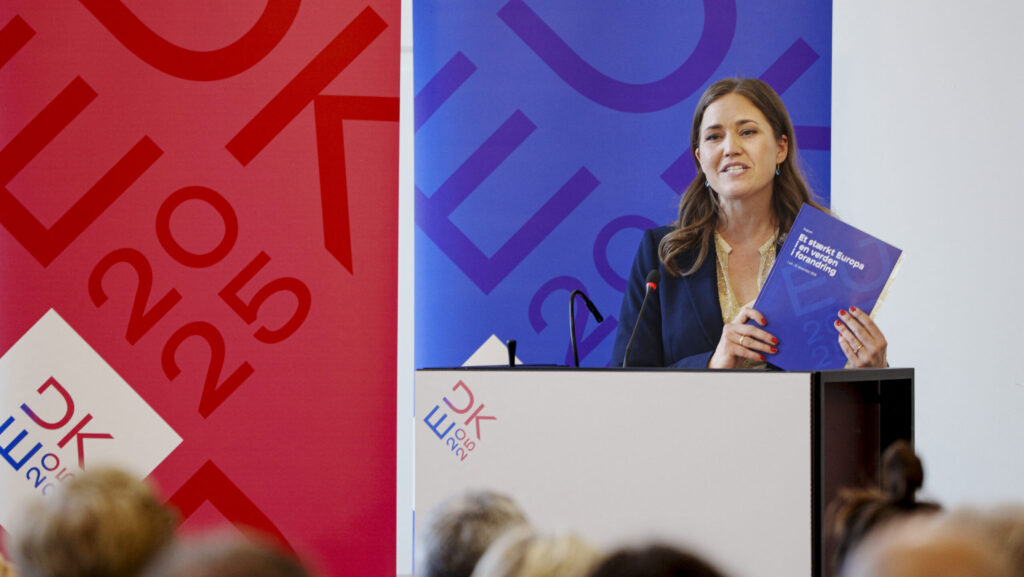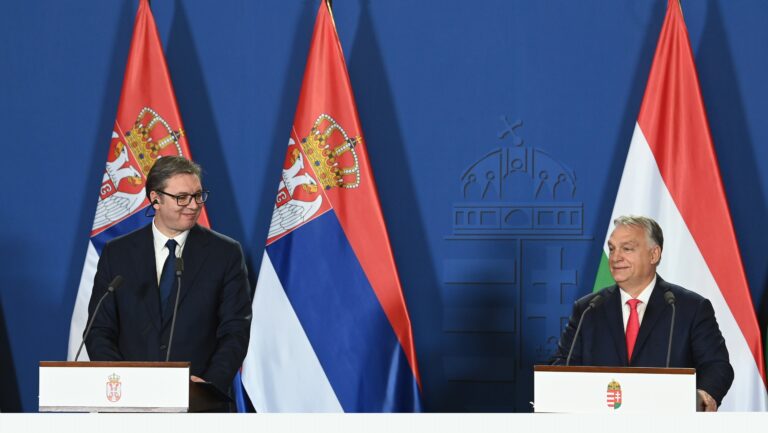Ian Bremmer, founder of the Eurasia Group, forecast that 2024 would be ‘the Voldemort of years’. A year that cannot be named. With two wars in Ukraine and the Middle East showing no sign of a solution and transformative global elections held in the US, Russia and India this is a year of great political uncertainty without evident global leadership. Adding to the witches brew, European elections will take place in June and European citizens from Austria, Lithuania and Croatia to Portugal and the United Kingdom will all go to the polls in the course of the year. What are the prospects for European Conservativism in a time of rising domestic tension and international anxiety?
It is widely assumed that the year will see the continued rise of far-right populist parties across Europe. Euronews forecasts that the far-right Identity and Democracy group could rise to a record high of 87 seats in the 720-member European Parliament, meaning it could compete with the Liberals to become the parliament’s third-biggest party.
Such predictions reflect a widespread consensus that elections after Covid would see the continuing growth of populist, nationalist movements against EU-imposed progressive policies regarding the family, marriage, education, and other social issues. This together with a weak European economy, a failed energy policy and mass migration forms a potent brew ripe for conservatives of various hues to exploit. The alienation of the working and middle classes, economically squeezed and politically disregarded by the mainstream European media, political and business elites, offers fertile ground for an appeal to national identity and strong borders. This would seem to presage a significant electoral shift across Europe toward a Eurosceptic conservative agenda. But, given recent European electoral behaviour post-Covid, will this be the case?
Elections held in 2022 did, initially, seem to indicate a rising populist wave. In April Viktor Orbán in Hungary saw off a united opposition to achieve a fourth electoral term. Fidesz (the ruling party) achieved a super majority of 135 seats in the 199-seat legislature enabling it to alter the constitution. The Italian election in October 2022 reinforced the sense of a populist wave sweeping Europe. A faltering economy, illegal migration and high interest rates contributed to the victory of a centre-right coalition which won a substantial majority in both parliamentary chambers. The leading party in the new coalition, the Brothers of Italy (FdI) was a party with a fascist past, but with an Anglophile and charismatic young leader, Georgia Meloni, who eschews simplistic classification.
The success of populist and ‘sovereigntist’ or national conservative parties in 2022, thus, seemed to augur well for a revisionist conservative and populist reaction across Europe driven by hostility to mass migration, irritation at progressive interference by Brussels, high energy prices and poor economic performance.
This was not, however, to be the case. 2023 in fact demonstrated, if demonstration were needed, that
a deep social, political, and ideological cleavage now divides electorates across Europe,
separating progressive, educated, urban, middle class and younger voters from the alienated rural, working class and older conservative voters living outside the fashionable urban centres. This cleavage was dramatically evident in election results in Spain, Slovakia, Poland, and Holland in the course of 2023.
In Spain the ruling left coalition led by Pedro Sanchez (Socialist Workers Party – PSOE) called early elections in July 2023. The main opposition party, the centre-right People’s Party (PP) led by Alberto Núñez Feijóo, won with 33.05 per cent (+12.24 per cent) of the vote and 137 (+48) seats, but they failed to achieve a governing majority in the 350 seat Cortez. Significantly Vox, the populist party promoting Spanish integrity that formed an alliance with the PP failed to deliver the kind of returns commentators anticipated. Incumbent Prime Minister, Pedro Sánchez lost the election, but the PSOE came second, winning 31.7 per cent (+3.70 per cent). After much post-electoral horse-trading, the PP failed to form a coalition government. This opened the way for Sánchez to put together a coalition with two separatist Catalan parties. This together with Sánchez’s cultivation of the formerly separatist Basque party Unidad made for a coalition that inflamed nationalist feelings leading to riots in November 2023.
A similar story of conservative frustration repeated itself in Poland with equally vexed political consequences. The October elections were widely covered in the European mainstream media. They were also closely, bitterly, and divisively fought between a progressive left seeking closer links to Europe and eschewing the conservative nationalism that Poland’s ruling Law and Justice (PiS) party has advanced since it achieved government in 2015. PiS’ political thinking shares an elective affinity with that of Orbán in Hungary and Meloni in Italy as well as Vox in Spain. The key issues in the election involved the economy and abortion rights which divided the conservatives and gave succour to progressives and women voters. The outcome was seen as a defeat for PiS by a centre-left coalition led by Donald Tusk, widely derided as a ‘Berlin stooge’. Although PiS received 35.4 per cent of the vote, Civic Platform (KP) achieved 30.7 per cent, their potential coalition partners Third Way 14.4 per cent and the Polish People’s party 6 per cent. Conservative President Andrzej Duda, designated outgoing Prime Minister Mateusz Morawiecki of PiS as the new PM, giving him four weeks to present a new cabinet and win a confidence vote in parliament. However, even though PiS is the largest party with 194 MPs, in the 460 seat Sejm all potential partners rejected its blandishments. An opposition-led government, fronted by Donald Tusk, took power in mid-December, and lost no time in implementing the opposition’s main goal of undoing the policies the outgoing administration had championed over the past eight years. This took the immediate form of liquidating Poland’s public media TVP and Polskie Radio, a move which the European Commission approved. The action, followed by attempts to remove the President from office reflect deep ideological divisions. It also indicates how the progressive left in power, follow the same intolerant and constitutionally questionable practices they accuse their opponents of adopting. The Polish election and the fortunes of the conservative/ right populist alignment mirrors the result in Spain.
The results in Spain and Poland not only represented a setback for conservatives and populists, but they also indicated the lengths to which pro-European progressive parties are prepared to go to secure power and delegitimate opposition from new right political movements, further reinforcing the unbridgeable ideological fault line between mainstream progressives and populists. Elsewhere in Europe however, results indicated that despite these setbacks, populism remains a force. Slovakia after a period of political instability, high inflation and the highest public sector debt in the Eurozone went to the polls in late September. The opposition Direction: Social Democracy (Smer-SSD), emerged as the largest party. Party leader and former Prime Minister Robert Fico, like Sánchez in Spain, a shrewd political operator, successfully coordinated coalition talks to form a government in October with two other conservative Eurosceptic parties. Fico led his campaign with a clear message of ending military aid to Ukraine. Fico’s electoral victory has now sparked concerns that NATO-member Slovakia could join Hungary in challenging the EU consensus on Ukraine.
If Slovakian populism follows a predictable Visegrád model, elections in Holland in November saw the remarkable rise of Geert Wilders’ anti-Islamic party, PVV. In response to pro-Palestinian demonstrations sweeping European capitals, Wilder’s re-awakened popular anxieties about Islamism and migration amongst the Dutch electorate. PVV won the plurality of votes and captured 37 seats out of 150, a quarter of the Dutch lower house. It eclipsed GL/PvdA, an alliance between the Social Democrats and the Greens, led by former European Commissioner Frans Timmermans, which came in a distant second with 25 seats. The right-liberal VVD of outgoing Prime Minister Rutte, now led by Dilan Yeşilgöz, won 24 seats. NSC (New Social Contract), a split-off from the Christian Democratic CDA, gained 20 seats. Nevertheless, the complexities of the Dutch proportional representation system meant Wilders, despite his evident electoral popularity, has been unable to form a coalition government.
In the context of the mixed fortunes of Eurosceptic conservative, Christian nationalism, results in October 2023 of lander or state election in Bavaria and Hesse in Germany also reinforced the sense of a populist resurgence in Western Europe. Almost all German media outlets described the results of the elections as a protest vote against the centre-left coalition federal government that achieved power in 2022. Both, Hesse in central-western Germany and Bavaria re-elected conservative state governments. The victory of the mainstream Christian Democrat parties was not a surprise. What was a surprise was the achievement of the populist right AfD making a notable breakthrough at the state level in Germany’s most prosperous lander. In Hesse, the AfD secured 18.4 per cent of the votes cast. Meanwhile, all parties of the Social Democrat–Green–Liberal federal government coalition saw heavy losses not just in Hesse but also in Bavaria.
The 2023 election cycle then offers only an ambivalent prospect of what might be the electoral fortunes of European populist and Eurosceptic conservatives in the Voldemort year 2024. Given the current mood in Europe, it is likely that Austria will see the Eurosceptic Freedom Party (FPO) elected to power, reinforcing the populist surge in Central Europe and its sovereigntist opposition to Brussels. Austrian elections are due in October. Meanwhile, in Portugal, the rise of the populist and anti-migrant Chega (Enough) party, currently polling at 17 per cent, could upset the ruling socialist party’s (PS) ambitions to continue in power after calling a snap election for March 2024. However, it is unlikely that Chega would be able to join a conservative coalition even if it held the post-electoral balance of power. A political quagmire, like that in neighbouring Spain, is likely to ensue. Elsewhere in Belgium, which goes to the polls in June, it is likely that the current pro-European, seven-party coalition will remain in power despite popular misgivings about migration and the Islamization of the inner cities.
The major electoral event in Europe will undoubtedly be the European parliamentary elections, also in June. Here, one can assume that the populist and identitarian party ID will substantially increase representation as, too, will the Euro-critical European Conservatives and Reformists group (ECR). It’s nevertheless unlikely that despite a significant rise in the representation of parties opposed to the current direction European federalism they will achieve sufficient seats to overthrow either the progressive dominance of the European parliament or the Commission.
The general conclusion to be drawn is that despite the rise of a populist, Eurosceptic right,
new populist parties still have difficulty in achieving a significant and permanent political breakthrough at both the national and European level.
They also find difficulty, outside Central Europe, in forming coalitions with more traditional, mainstream, Conservative, Christian Democrat parties. Indeed, despite often achieving the majority of the vote share, conservative parties of the right have difficulty in putting together effective coalitions, as both the Spanish, Polish, and, more recently, Dutch elections demonstrate. This, in part, reflects the fact that voting in all the countries discussed have often complex proportional representation systems that belies the possibility of dominant parties emerging as in a majoritarian system like the United Kingdom, where the ruling Conservative Party faces electoral annihilation in the first-past-the-post election to be held in late 2024.
The European countries discussed all have some version of a proportional system with a five per cent threshold for a party entering the legislative. The threshold is lower in both Spain and Italy and virtually non-existent in Holland. Significantly, the instability of coalitions together with consistent tinkering with the constitution has become a hallmark of European politics over the last decade. Italy, Spain and Slovakia have all made significant changes to their voting systems further facilitating a growing disillusion with democracy and political accountability. Elections are rarely decisive and lead to a post-election period of murky political manoeuvring before an actual coalition government eventually emerges from the shade.
In this context, moreover, parties of the left aided by a European progressive classis politica have greater facility and experience in putting together coalitions, despite failing to achieve a plurality of the votes. Spain and Poland are cases in point. The lesson for conservatives, if they want to achieve power, is how they might work more pragmatically with new parties of the right. Such accommodating tactics or the cynical calculation necessary to form government never seems to bother progressive Socialists or Greens.








